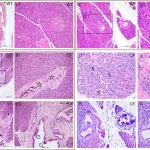
During the festive season, millions of Americans bring live Christmas trees into their homes, relishing the fresh fragrance they emit. However, a study led by the National Institute of Standards and Technology (NIST) aimed to unravel the emission of volatile organic compounds (VOCs) from these trees and their potential effects on indoor air quality.
NIST researchers focused on Douglas fir trees, sealing one inside a controlled chamber to measure the emitted VOCs and their impact over 17 days. Published in the journal Indoor Environments, their findings shed light on the type and quantity of chemicals released by these holiday trees.
The familiar scent of Christmas trees results from a group of VOCs called monoterpenes, commonly found in air fresheners, candles, and personal care products. While these compounds are also released by conifers outdoors, their indoor emissions from cut trees have been poorly understood.
The study revealed that monoterpene emissions from the tree peaked on the first day, resembling levels found in new homes or air fresheners, before rapidly declining over the next few days. Monoterpenes, known for reacting with ozone, formed byproducts like formaldehyde when exposed to it. However, the levels of formaldehyde generated remained relatively low compared to typical household concentrations.
While the emission of VOCs, especially upon bringing trees indoors, might cause discomfort for individuals sensitive to such compounds, the study suggests simple strategies. Opening a nearby window to allow ventilation or allowing newly cut trees to sit outdoors for a few days before bringing them inside can mitigate exposure.
Dustin Poppendieck, an environmental engineer at NIST, emphasized that while these findings provide insights into indoor air chemistry influenced by Christmas trees, for most people, the impact on health is minimal. He expressed his personal intent to continue having a Christmas tree in his home despite the study’s findings.










